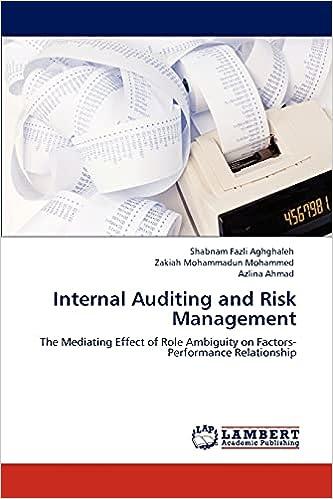Question
1.The textbook defines assets as probable future economic benefits obtained or controlled by an entity as a result of past transactions or events. Companies engage
1.The textbook defines assets as probable future economic benefits obtained or controlled by an entity as a result of past transactions or events.
Companies engage in research and development (R&D) in order to develop new products, processes, and/or ideas that may provide future value.
Under U.S. GAAP, all R&D costs are expensed in the year incurred (no asset recorded).For example, if a company spent $1,000,000 cash on R&D in 2017, U.S. GAAP would require the following journal entry:
R&D Expense1,000,000
Cash 1,000,000
Under IFRS, research costs are expensed (similar to U.S. GAAP).However, development costs are capitalized (recorded as an asset) once economic viability is achieved.In essence, economic viability indicates that the project is far enough along in the process such that the economic benefits of the R&D project will flow to the company.Therefore, under IFRS development costs incurred after economic viability is reached meet the definition of an asset. For example, if a company spent $500,000 cash on research and $500,000 cash on developing a project with economic viability, IFRS would require the following journal entry:
Research Expense500,000
Asset 500,000
CAsh 1,000,000
Provide your opinion as to whether U.S. GAAP or IFRS produces more decision-useful information related to R&D expenditures. In your answer, explain whether (in your opinion) the methodology you choose (U.S. GAAP or IFRS) improves the relevance or faithful representation (or both) of the information.
2.Cougar Corp purchased a piece of machinery on January 1st, 2014 for $1,000,000. The estimated useful life of this machinery is 4 years and the estimated salvage value is $75,000.
Record the journal entries that Cougar Corp would make at the end of 2014, 2015, 2016, and 2017 to record depreciation expense for this machinery assuming the declining balance method is used (assume the rate used is double the straight line rate).
Step by Step Solution
There are 3 Steps involved in it
Step: 1

Get Instant Access to Expert-Tailored Solutions
See step-by-step solutions with expert insights and AI powered tools for academic success
Step: 2

Step: 3

Ace Your Homework with AI
Get the answers you need in no time with our AI-driven, step-by-step assistance
Get Started


